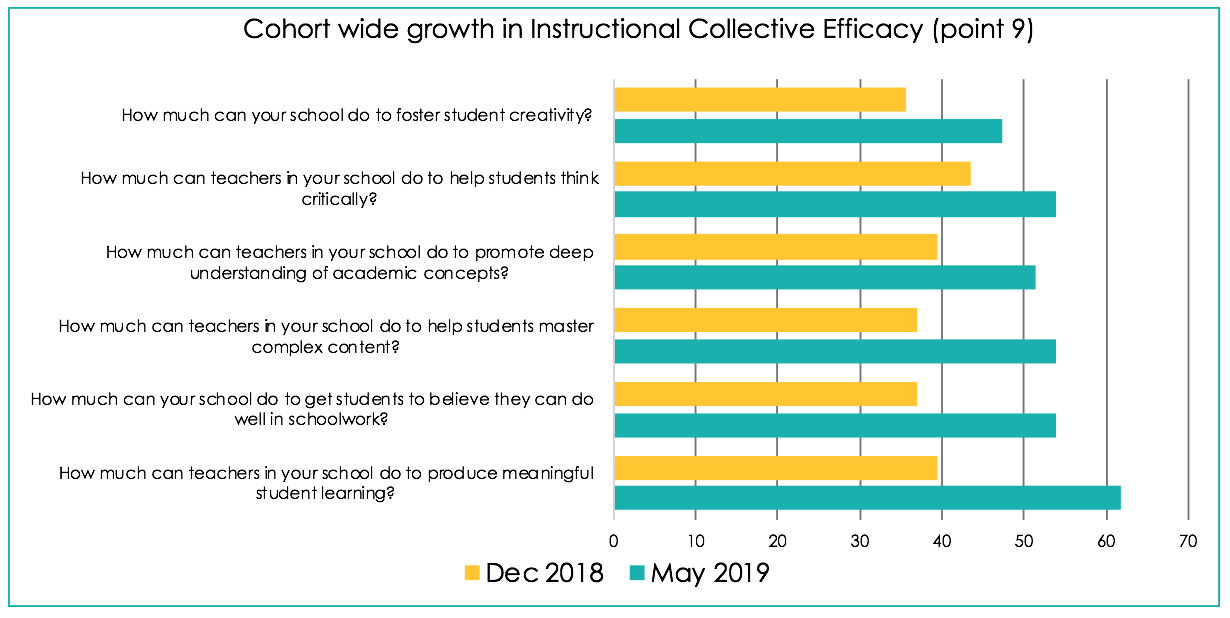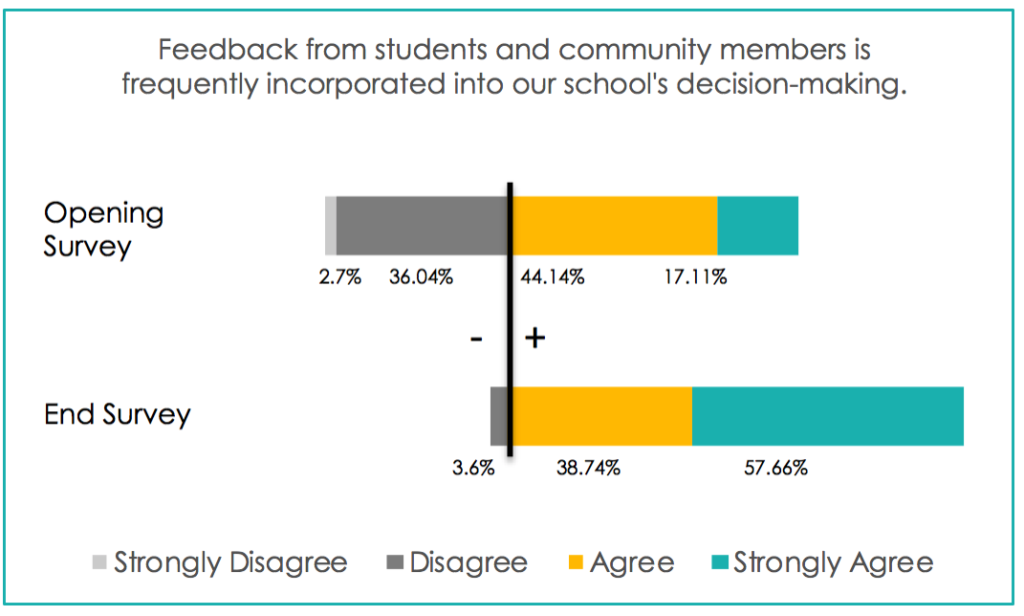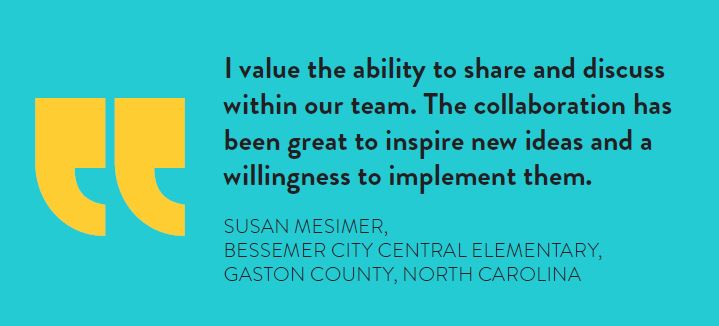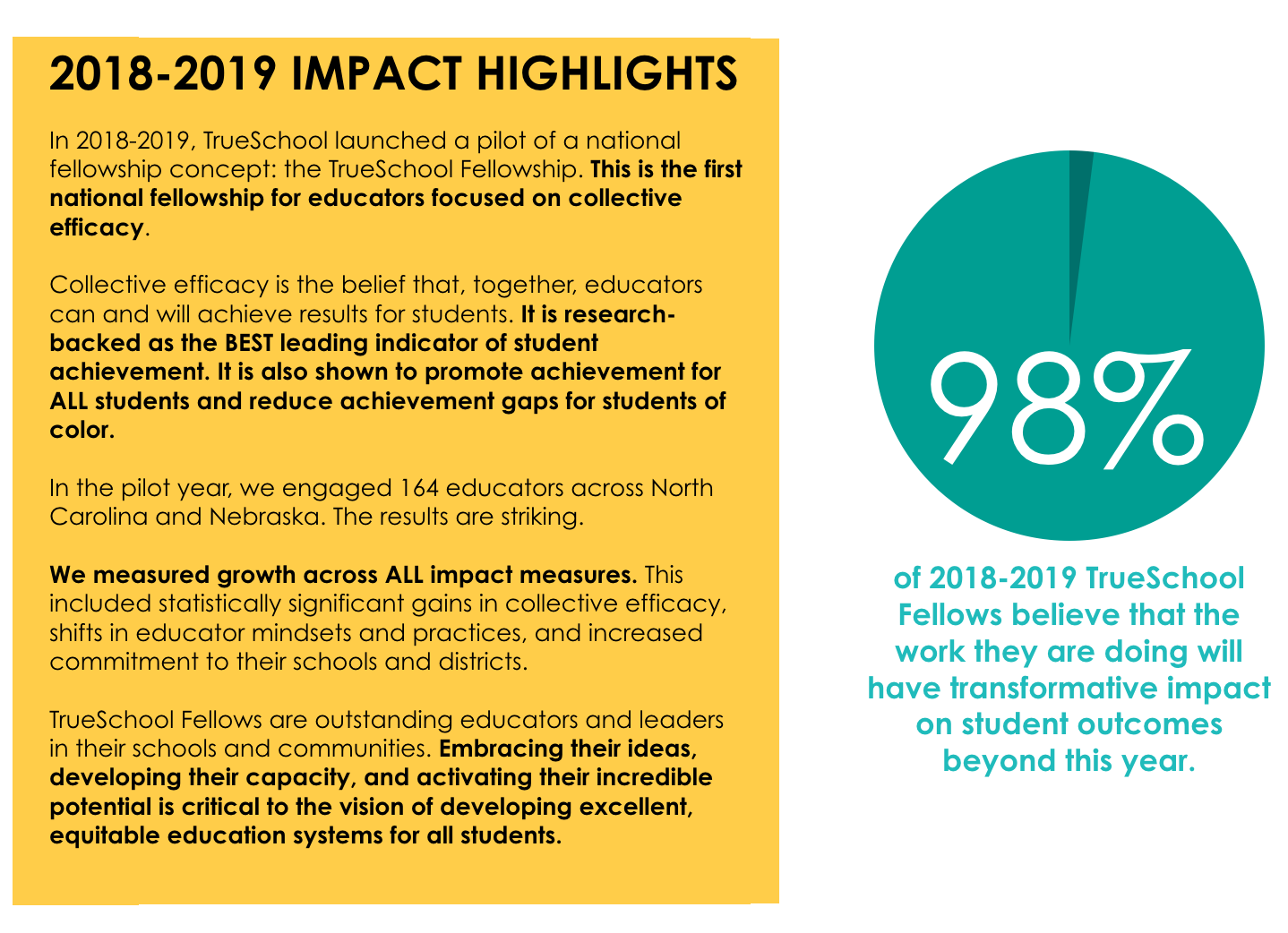Click here to read the full TrueSchool Fellowship 2018-2019 Impact Report!
1) Educators grew significantly in their sense of collective efficacy.
This belief is the single greatest predictor of student achievement.
Before change occurs, people need to believe. They need to believe that change and improvement is necessary and possible. They need to believe that, together, they can achieve results and create a better future.
This belief, called “collective efficacy” is key to successful schools and systems. When people believe that their team can they can achieve, they go for it. When they go for it, they achieve results. When they achieve results, they tackle even greater challenges. And the virtuous cycle continues…
64% of educators grew in their sense of collective efficacy.
23% of educators grew by more than 10%

This chart shows the growth in percentage of educators reaching the top rating (9) for individual items on the Collective Efficacy in Instructional Strategies subscale.
2) Educators are more satisfied with working in their schools and districts.
This is the best leading indicator of principal and teacher retention.
America is currently facing a teacher retention crisis, with research predicting shortages of over 100,000 annually.[1] We use a well-established scale–“net promoter scores”—to measure educators’ perceptions of their school and district. This is a strong leading indicator of commitment and retention. When educators stay, schools and systems retain institutional knowledge, deepen relationships with students and community members, and create pipelines for teacher leaders, mentors, and future school and systems leaders.
[1] Sutcher, Leib, Linda Darling-Hammond, and Desiree Carver-Thomas. “A coming crisis in teaching? Teacher supply, demand, and shortages in the US.” (2016): 499-534.
District: How likely are you to recommend working in your district to a friend or colleague?
| Opening |
| Detractors: 25%
Passive: 35.4% Promoters: 39.6% |
| Mid-Year |
| Detractors: 19%
Passive: 33.7% Promoters: 47% |
| End-of-Year |
| Detractors: 14%
Passive: 29.2% Promoters: 58% |
School: How likely are you to recommend working at your school to a friend or colleague?
| Opening |
| Detractors: 13.8%
Passive: 30% Promoters: 56.2% |
| Mid-Year |
| Detractors: 6.6%
Passive: 29.2% Promoters: 64% |
| End-of-Year |
| Detractors: 3.8%
Passive: 16.1% Promoters: 80% |
15% more educators seeing opportunities for continued career growth in their school or district (from 79% at start to 94% at end).
3) Educators are listening more often and more deeply to students and families.
Keeping students and community at the center is essential to effective + enduring improvement.
TrueSchool educators are making decisions based on input and feedback from students and community members. TrueSchool educators are invested in creating something new with students, versus for students. Throughout the TrueSchool Process, educators return to student, family, colleague, and community wants, needs, and hopes. Educators engage in rigorous fieldwork to seek out, deeply listen to, and respond to student and family feedback. This helps them build understanding and question assumptions about the communities they serve. When a team of educators believes in their ability to improve student outcomes, they are more likely to solve problems and find effective solutions. This belief, called “collective efficacy,” is the single biggest predictor of student achievement.

35% more educators report gathering and using feedback from students and community members (from 61% at the start to 96% at the end).
40% more strongly agree.

REFERENCES
Adams, C. M., & Forsyth, P. B. (2006). Proximate sources of collective teacher efficacy. Journal of Educational Administration, 44(6), 625–642.
Hattie, J. (2016, July). Mindframes and Maximizers. 3rd Annual Visible Learning Conference held in Washington, DC.
Tschannen-Moran, M., & Barr, M. (2004). Fostering student learning: The relationship of collective teacher efficacy and student achievement. Leadership and Policy in Schools, 3(3), 189–209.
Tschannen-Moran, M., Hoy, A. W., & Hoy, W. K. (1998). Teacher efficacy: Its meaning and measure. Review of educational research, 68(2), 202-248.

